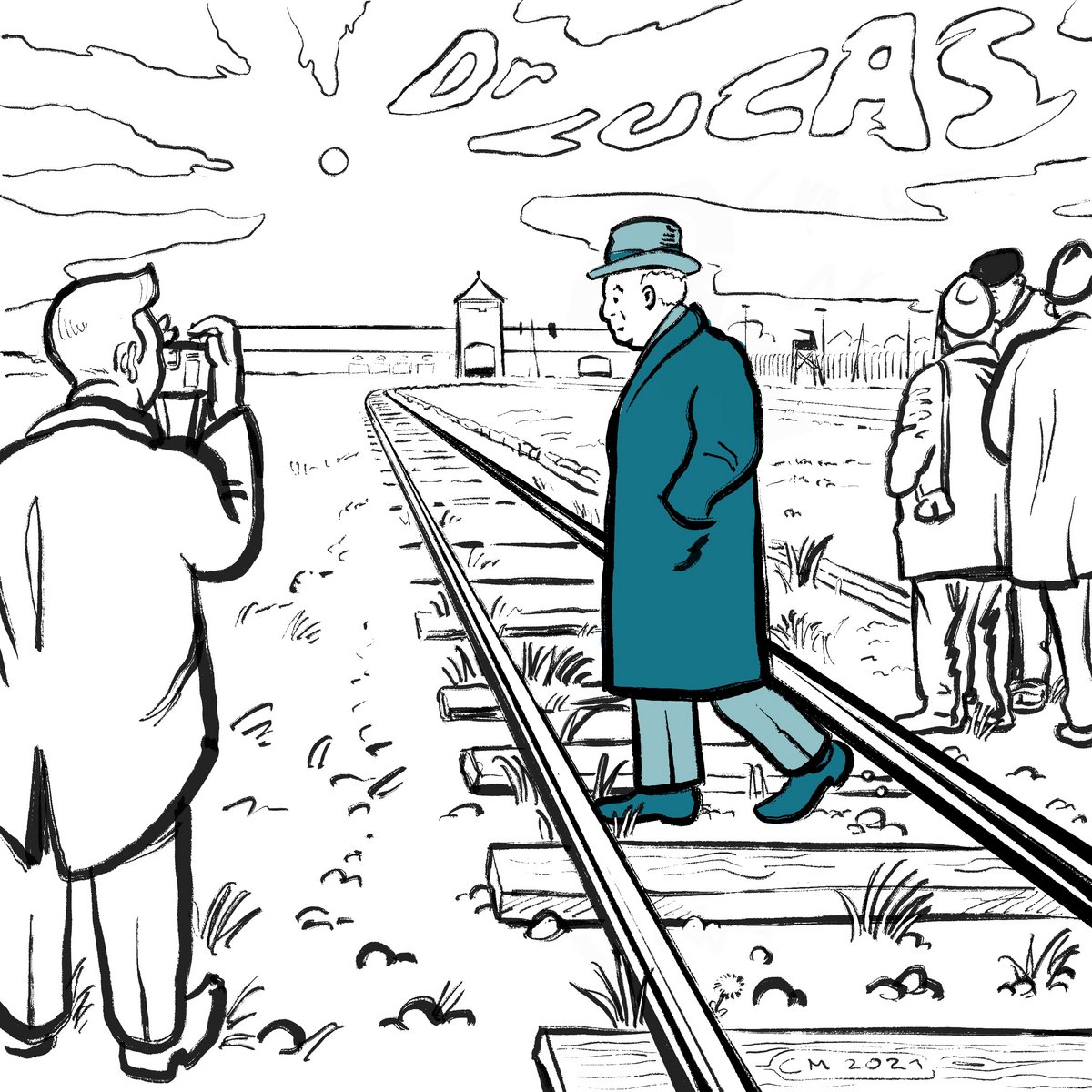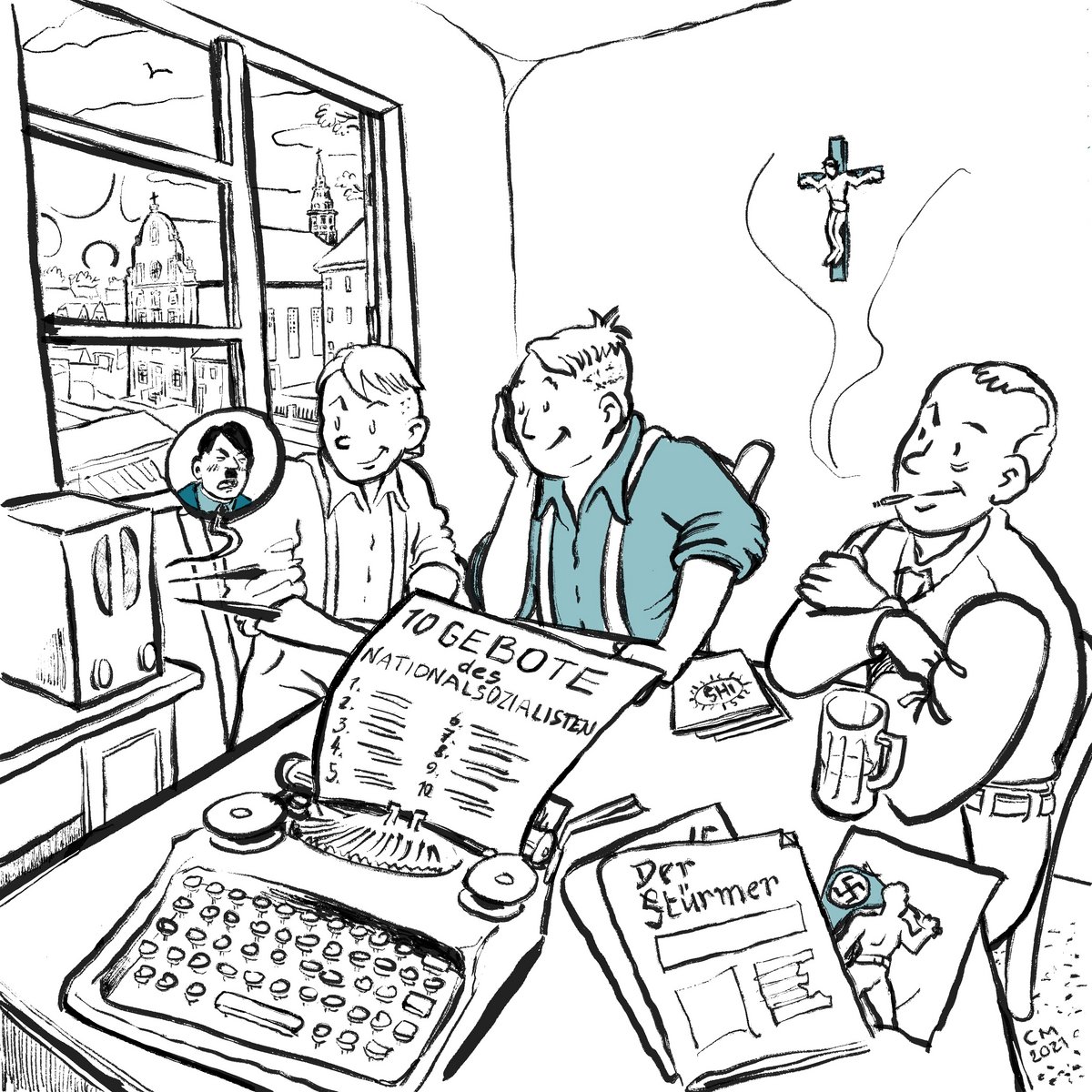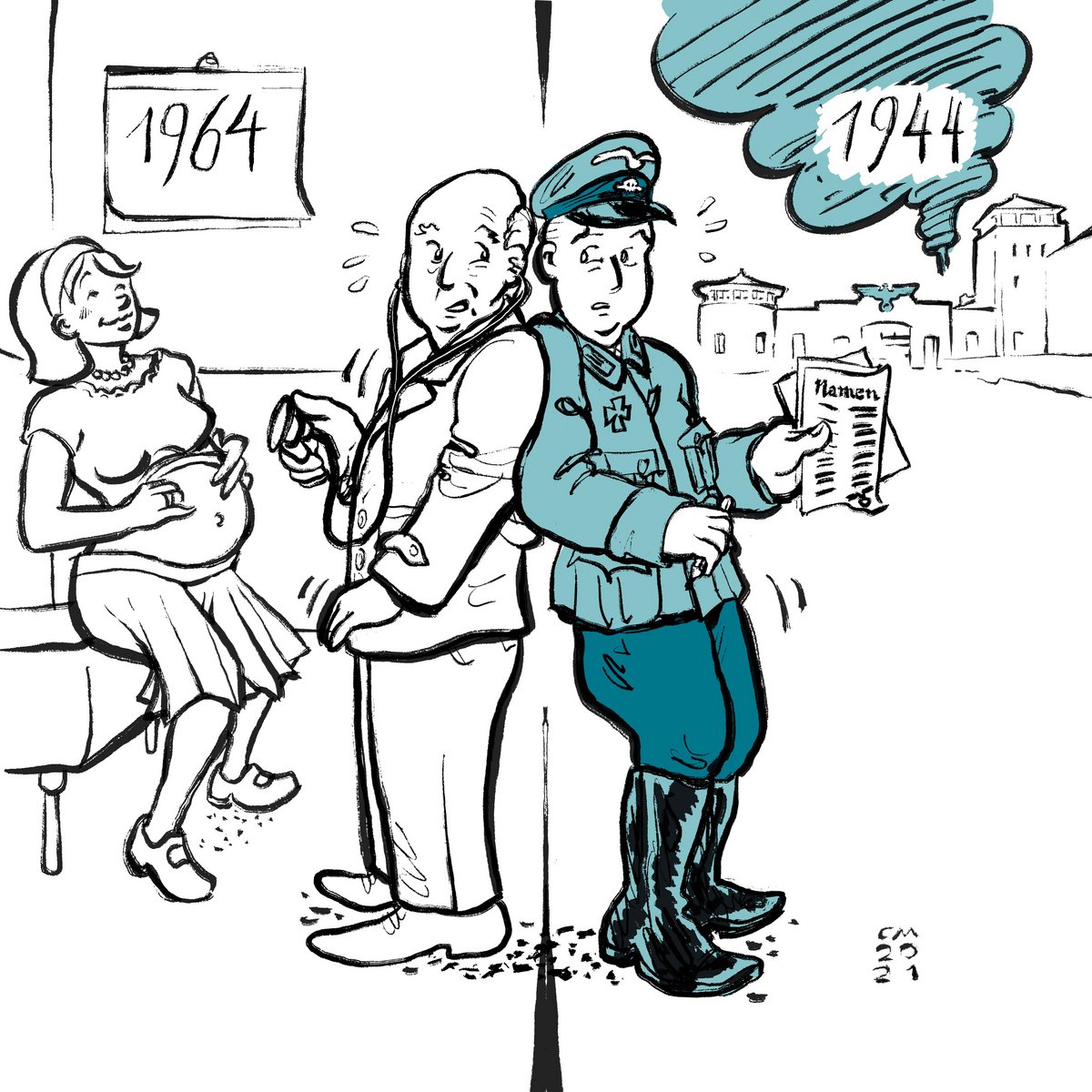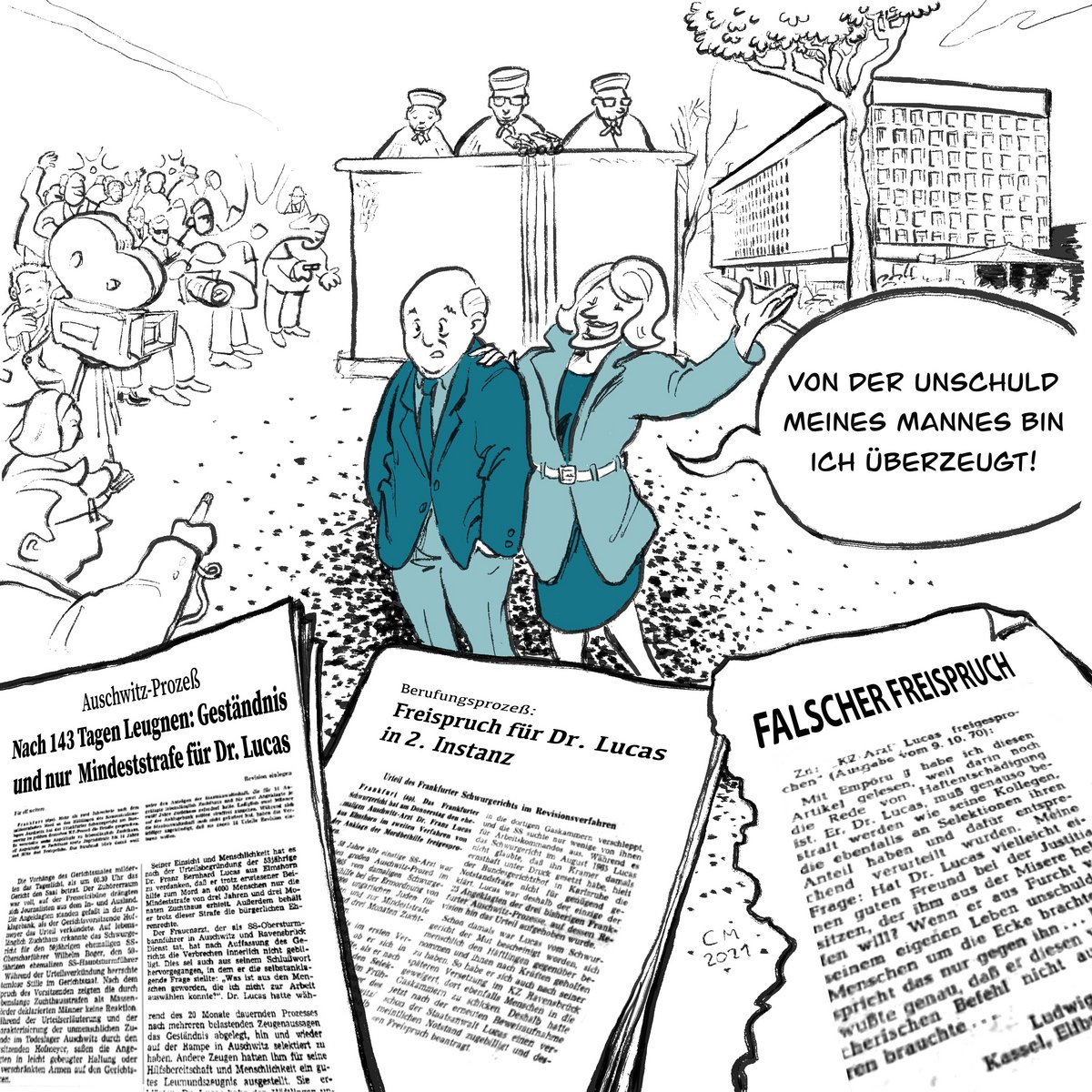In 1938, in a small town in Upper Austria, one of the many Nazi concentration camps was constructed. It was known as the Mauthausen concentration camp. It existed from 1938 to 1945. The camp was run and guarded by the SS. The people who were imprisoned here came from many countries in Europe: Poland, Russia, France, Italy, Germany, Austria and others. They were political opponents, belonged to marginalised groups (e.g. ‘criminals’, ‘asocials’) or were persecuted for anti-Semitic and racist reasons (e.g. Jews). Most of the prisoners were men, but there were also women and children.
In the Mauthausen quarry, the prisoners carried out hard forced labour. In the more than 40 subcamps (Gusen, Steyr, Linz, Ebensee, Vienna...), they were deployed in the arms industry. People lived in overcrowded accommodation. They were not given enough food and clothing, and they starved and died of diseases. SS men beat many prisoners to death, shot them or murdered them in the gas chamber at Mauthausen. In total, almost 200,000 people were imprisoned at Mauthausen and its subcamps. Half of them lost their lives.
The Mauthausen concentration camp was on a hill and could be seen for miles around. Many people were involved with the camp: they worked there, brought deliveries or knew SS men. Almost everyone knew about the death camp. Often, the SS men committed the crimes in full view of the population. On 5 May 1945, the Mauthausen concentration camp was liberated by US troops.
Here, you will read the story of a person who was connected with the Mauthausen concentration camp.
Franz Lucas
Text: Oksana Dmytruk Kolarik – Illustration: Michael Car

It’s 14 December 1964, just over a week before Christmas. A group is visiting the Auschwitz-Birkenau Memorial in Poland. They are standing on what's known as the ‘ramp’. The ‘selection’ is being explained to them: ‘This is where the trains arrived. SS doctors would be waiting. They would direct people to the left or to the right. Right meant forced labour in the concentration camp. Left meant to the gas chamber.’

This is not an ordinary group of visitors. They include judges, prosecutors and defence lawyers from the first Auschwitz trial in Frankfurt am Main. At the back of the group, there is a man with a scar on his cheek. He is the only defendant among them: Dr Franz Lucas.
He is 53 years old, highly respected, and until recently, head gynaecologist at Elmshorn hospital. Now he runs a private practice and treats his patients on days when the trial is not taking place. He has to stand trial as a former SS doctor in Auschwitz and other concentration camps.
Franz Lucas is born in Osnabrück in 1911 as the son of a master butcher. He attends a strict Catholic Jesuit high school in Meppen, and it is at this time that he becomes interested in National Socialism. Lucas studies medicine in Münster and Rostock and becomes a gynaecologist. In 1937, he joins the National Socialist German Workers’ Party (NSDAP) and the SS.
In 1939, the Second World War begins when the German Reich invades Poland. Franz Lucas is transferred to Nuremberg in 1942, where he works in an SS military hospital and as a military doctor. He is transferred again in 1943, when is assigned as a doctor to the SS office responsible for the concentration camps. The SS doctors form a separate group in the concentration camps. In addition to providing medical care to SS personnel and prisoners, they have a specific role in the Nazi extermination program. They select the people to be killed and carry out or supervise the murders.

Franz Lucas first becomes an SS doctor in the Auschwitz-Birkenau concentration camp, where it is primarily Jews who are murdered in the gas chambers. The cattle cars carrying men, women and children from all over Europe arrive at the ramp in Auschwitz. Lucas takes part in the selection of the arrivals and sends thousands of people to the gas chamber.
From August to October 1944, he serves as a camp doctor in the Mauthausen concentration camp. As in all concentration camps, medical care at Mauthausen is divided into two parts: favoured prisoners are treated in the Infirmary, but the vast majority of sick prisoners are sent to the Special Infirmary, where they receive barely any medical care. From 1943, they are taken to the Infirmary Camp.
Some prisoners who have medical training report to the SS doctors. Lucas knows some of the Polish prisoner doctors from Auschwitz-Birkenau. He takes them out of the hard labour in the quarry so that they can provide medical care for their Polish compatriots. Lucas gets into an argument with the camp commander, Franz Ziereis, because he treats concentration camp prisoners who have been bitten by guard dogs in the quarry. This is not common. Lucas also reportedly smuggles medicines into the camp for the prisoners.

However, according to witness testimonies, Franz Lucas is involved in selecting prisoners for the Hartheim killing centre in the Mauthausen concentration camp. Between April and December 1944, over 3,000 sick and weak prisoners, including many Hungarian Jews and Soviet prisoners of war, are killed in the gas chamber at Hartheim.
Lucas is transferred from Mauthausen to various concentration camps, the last of which is the Sachsenhausen concentration camp near Berlin. From there, in mid-April 1945, he cycles to Elmshorn. This is where he is when the war ends in May. Lukas isn’t charged and works as a doctor at the local hospital after the Second World War. From 1954, he heads the gynaecology department. He has a house built, marries in 1950 and becomes the father of two daughters.
In the 1960s, however, his past catches up with him. Franz Lucas is one of the defendants in the Frankfurt Auschwitz trials from 1963 to 1965. He claims that he was not involved in the crimes at Auschwitz. His wife Susanne believes that her husband has been falsely accused. She says she only learns of his wartime past through the press.
After 143 days of pleading not guilty, in March 1965, Lucas finally admits that he conducted selections on the ramp at Auschwitz, following incriminating witness statements. In August 1965, he is sentenced to three years and three months in prison for aiding and abetting the murder of at least 4,000 people. He serves this sentence.
In 1969, a new trial begins after the German Federal Court of Justice overturns the verdict because of unresolved issues. In 1970, he is acquitted because he helped some prisoners and the court believes his account that he felt forced by superiors to carry out the selections of prisoners.
Franz Lucas runs his private practice as a gynaecologist until 1983. He dies in Elmshorn in 1994.

- 1911 Franz Lucas is born in Osnabrück
- 1914 28 July, start of the First World War
- 1918 11 November, end of the First World War
- 1933 30 January, Adolf Hitler becomes Reich Chancellor in Germany
- 1937 Lucas joins the National Socialist German Workers’ Party (NSDAP) and the SS
- 1938 12 March, ‘Anschluss’ (‘Annexation’) of Austria to Nazi Germany
- 8 August, construction starts on the Mauthausen concentration camp
- 1939 1 September, start of the Second World War
- 1940 May, Construction begins on the Auschwitz concentration camp
- 1942 Lucas becomes a military doctor in an SS hospital in Nuremberg
- 1943 SS camp doctor at Auschwitz-Birkenau
- 1944 Camp doctor at Mauthausen, later in other concentration camps
- 1945 Lucas leaves the Sachsenhausen concentration camp before it is liberated
- 5 May, Mauthausen concentration camp is liberated by the US Army
- 8 May, surrender of Nazi Germany, end of the Second World War in Europe
- 1963 Charges are brought against him as part of the Auschwitz trials
- 1965 He admits guilt, is convicted and given a prison sentence
- 1969 - 1970 He is tried again and acquitted
- 1994 Franz Lucas dies in Elmshorn
Further reflection in groups...
From 1943, Franz Lucas works as an SS doctor in several concentration camps. What are his duties in the camps?
In the 1960s, Franz Lucas is taken to court. His wife Susanne wants to put in a good word for him. Think about why she defends him despite the incriminating evidence.
As part of his trial, Lucas returns to Auschwitz as a defendant. What memories might he associate with his former workplace?
During your visit to the Mauthausen concentration camp memorial, you will also see where the SS men worked and lived. Find out what their everyday life was like there.